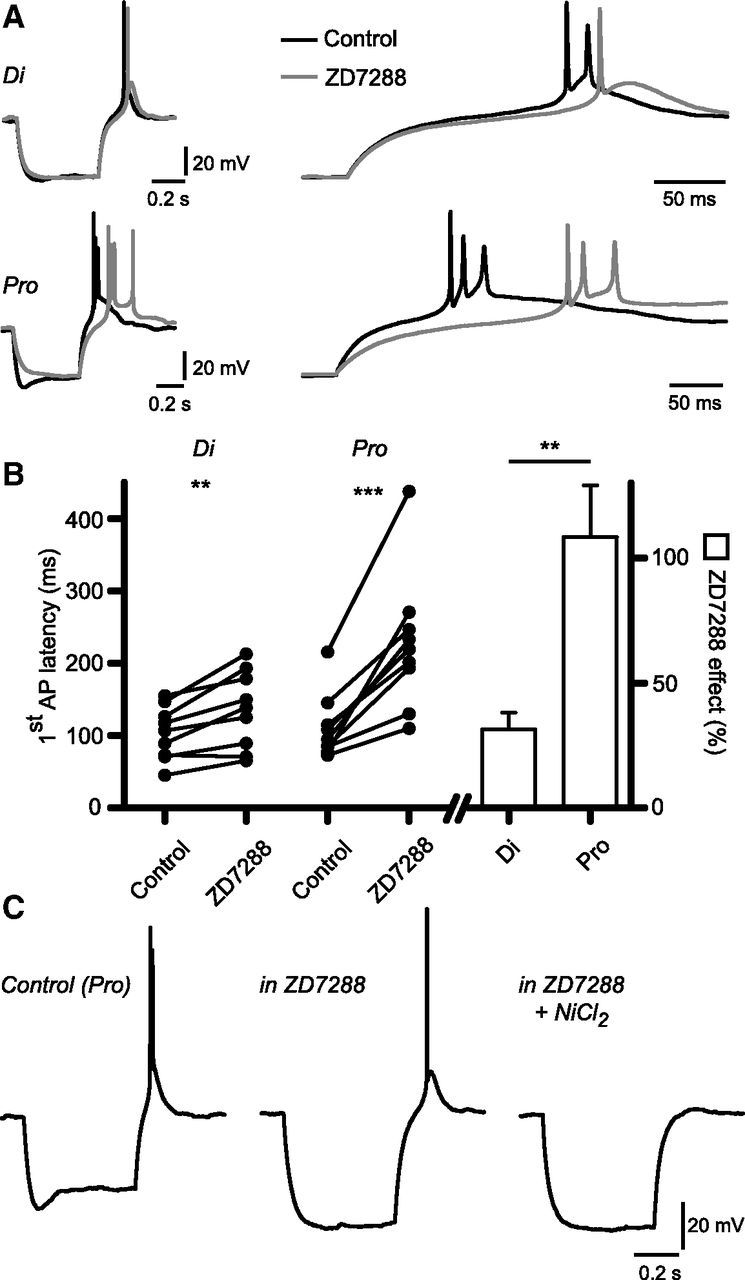Figure 8.

Ih differentially alters the timing of rebound firing in diestrous and proestrous RP3V kisspeptin neurons. A, Example traces of the rebound firing following injection of a hyperpolarizing current in a diestrous and a proestrous RP3V kisspeptin neuron, in the absence (black) and in the presence (gray) of 10 μm ZD7288 (left). Current injection was adjusted in the proestrous neuron to reach a similar steady-state hyperpolarization (control: −80 pA; ZD7288: −40 pA). Higher-resolution traces (right) show that the ZD7288-induced delay of AP firing is longer in proestrous than in diestrous RP3V kisspeptin neurons. B, Graph summarizing the effect of ZD7288 on rebound firing latency in diestrus (n = 9 neurons, 4 mice) and in proestrus (n = 9 neurons, 5 mice). **p < 0.01, ***p < 0.001. C, Example traces of a proestrous RP3V kisspeptin neuron in which rebound firing is not prevented by ZD7288 but is abolished by 200 μm NiCl2. Similar results were obtained in six neurons from three mice in total.
